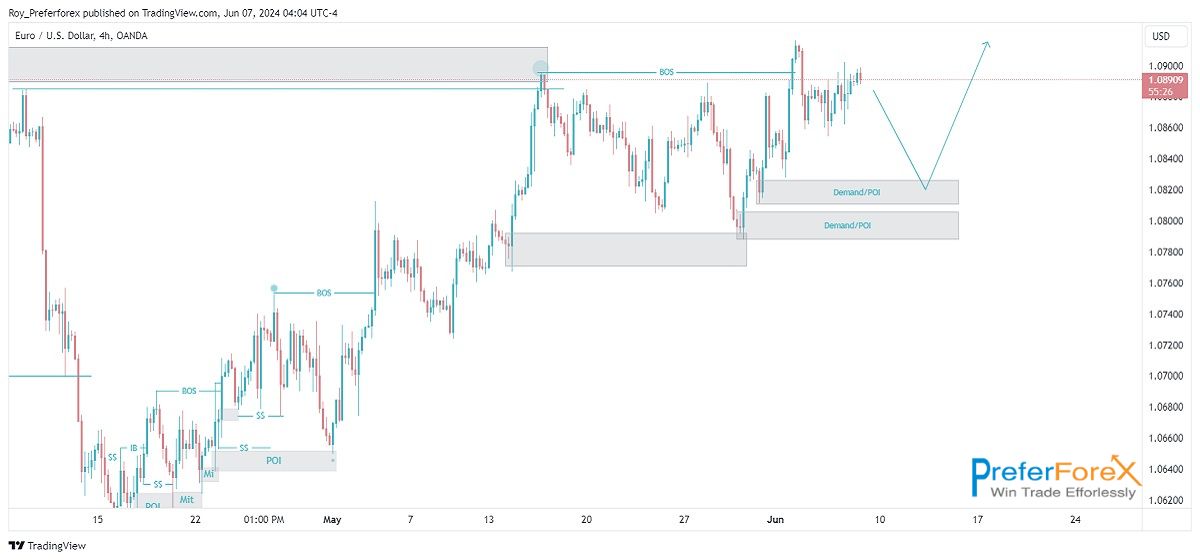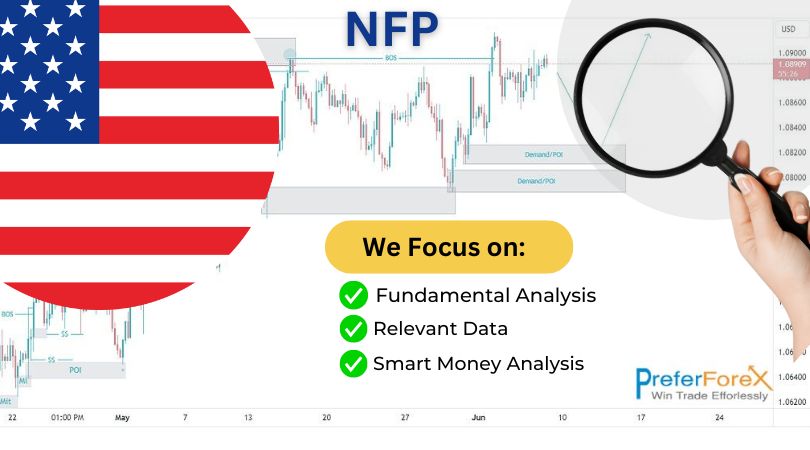US Non-Farm Payroll Related Factors Analysis
On Friday, June 7th, the Non-Farm Payrolls (NFP) report is scheduled to be issued., The US economy added 175,000 jobs in April 2024, and 190 thousand are expected for May.
A stronger than expected NFP number could put upward pressure on yields (interest rates), as it would signal continued tightness in the labor market.
Fed Plan and Impact on NFP
However, a weaker than expected NFP number may not necessarily lead to a major market reaction, as the Fed has already indicated it plans to pause rate hikes after the June meeting. The NFP report is a key data point the Fed monitors closely when making monetary policy decisions. A strong jobs report could embolden the Fed to resume rate hikes down the line. Overall, the market is anticipating a solid but not exceptional NFP number on June 7th, and the focus will be on interpreting how it impacts the Fed’s policy path going forward.
Upward or Downward Pressure for EUR?
If we get a much stronger than expected NFP number, that could put some upward pressure on the dollar, especially against the euro. The euro has been trading really well lately, so a stronger than expected NFP could start to see some downward pressure on EURUSD. U.S beureau of Labor Statistics grap below tradingeconomics
The key points from the EUR/USD
A stronger than expected NFP jobs report could lead to the US dollar strengthening, especially against the euro currency. The euro has been performing well lately, so a robust NFP number could cause the EUR/USD price to decline.
The EUR/USD pair could see “some downward pressure” if the upcoming NFP data comes in much stronger than anticipated by the market.
So in summary, Overall a positive surprise in the US jobs data on Friday could lead to the euro weakening against the US dollar, based on the potential market implications for Federal Reserve policy.
Get Details Signals YOUR WhatsApp number Join Today!

EURUSD Pair bullish bias
According to the 4-hour view, the price has broken the most recent high at the 1.09 level, and now the price is retracing the downside. There are two demand zones or POIs at the 1.0820 and 1.0800 levels. If the price reacts at these zones, then we may see another high. However, if the price breaks and closes below the 1.0790 level, then the bias will be shifted to bearish.




